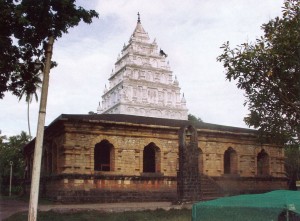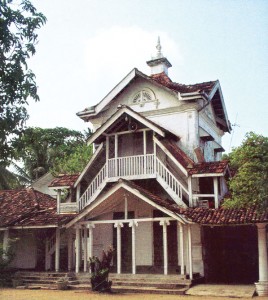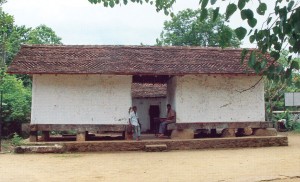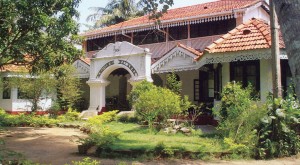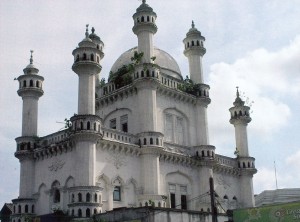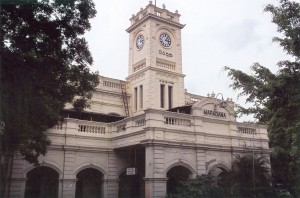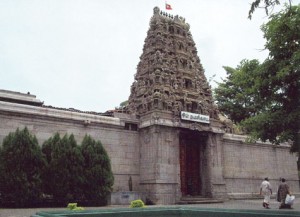-
Heritage Buildings of Sri Lanka
April 2010
by Nimal de Silva and DP Chandrasekara
Published by The National Trust of Sri Lanka (2009)
Heritage Buildings of Sri Lanka is a documentation of the architectural heritage dating from the” medieval period (13th century) to the colonial period.  The book takes the reader through an interesting collection of heritage buildings which are scattered by the main roads or on byways along mainly the Western, Southern, Sabaragamuwa and Central Provinces of Sri Lanka. They form a “living heritage” unlike the renowned built heritage of Anuradhapura and Polonnaruwa. Although some have been renovated by the Department of Archaeology most are maintained by the public. The note on the dust cover explains that this is “a product of the documentation and survey carried out by the Centre for Heritage and Cultural Studies in the University of Moratuwa on the architectural heritage of the recent past, not found in the National Monuments”.
The book takes the reader through an interesting collection of heritage buildings which are scattered by the main roads or on byways along mainly the Western, Southern, Sabaragamuwa and Central Provinces of Sri Lanka. They form a “living heritage” unlike the renowned built heritage of Anuradhapura and Polonnaruwa. Although some have been renovated by the Department of Archaeology most are maintained by the public. The note on the dust cover explains that this is “a product of the documentation and survey carried out by the Centre for Heritage and Cultural Studies in the University of Moratuwa on the architectural heritage of the recent past, not found in the National Monuments”.
Its attractive cover could easily make this book reside comfortably on a coffee table but it will be put to best use if used as a handbook to carry along on a trip to select interesting sites to see along the way to your destination and then as a guide to identify significant architectural details. As mentioned in the introduction “buildings though primarily for human use, are also meant to be appreciated for their aesthetic value, the beauty of form and style” and continues that it “documents a set of selected samples of different building types that are found scattered in many districts”. The authors have selected an arresting variety of building styles – the typical architecture of the Sinhala kingdom to buildings with colonial influence. It is significant that the buildings have not become redundant or outdated with time.
The collection of buildings have been grouped as religious – Buddhist, Hindu, Islamic and Christian and secular where not only buildings of private and domestic nature, hotels and rest-houses and ambalamas as well as infrastructure have been included. Each building carries as a footnote directions on how to get to the location. The photographs are not works of art but provided for identification purpose. Occasional lapses seen in the selection of pictures as in page 63 in the section devoted to Image Houses – Single Storey – Low Country and in proof reading are eclipsed by the enormity of the work undertaken.
The current fascination with globalization which is a powerful tool in disseminating knowledge could result in obliterating the cultural identities of nations. Therefore the Authors and the publisher, The National Trust of Sri Lanka are commended for their commitment towards creating awareness of our living heritage. The book would also be a ready reference to students of Architecture and allied subjects such as Archeology and History.
The publisher, National Trust of Sri Lanka has been set up in 2006 with its objective to provide a public forum to subscribe to heritage values of the country. Internationally there are currently 58 National Trusts around the world which have consolidated to form the International National Trust Organization (INTO) since 2007. The Trust plans to publish similar informative books on areas of concern of the National Trust covering both natural and cultural components of aesthetic or of historical value.
Reviewed by Mayanthie Jayasinghe

